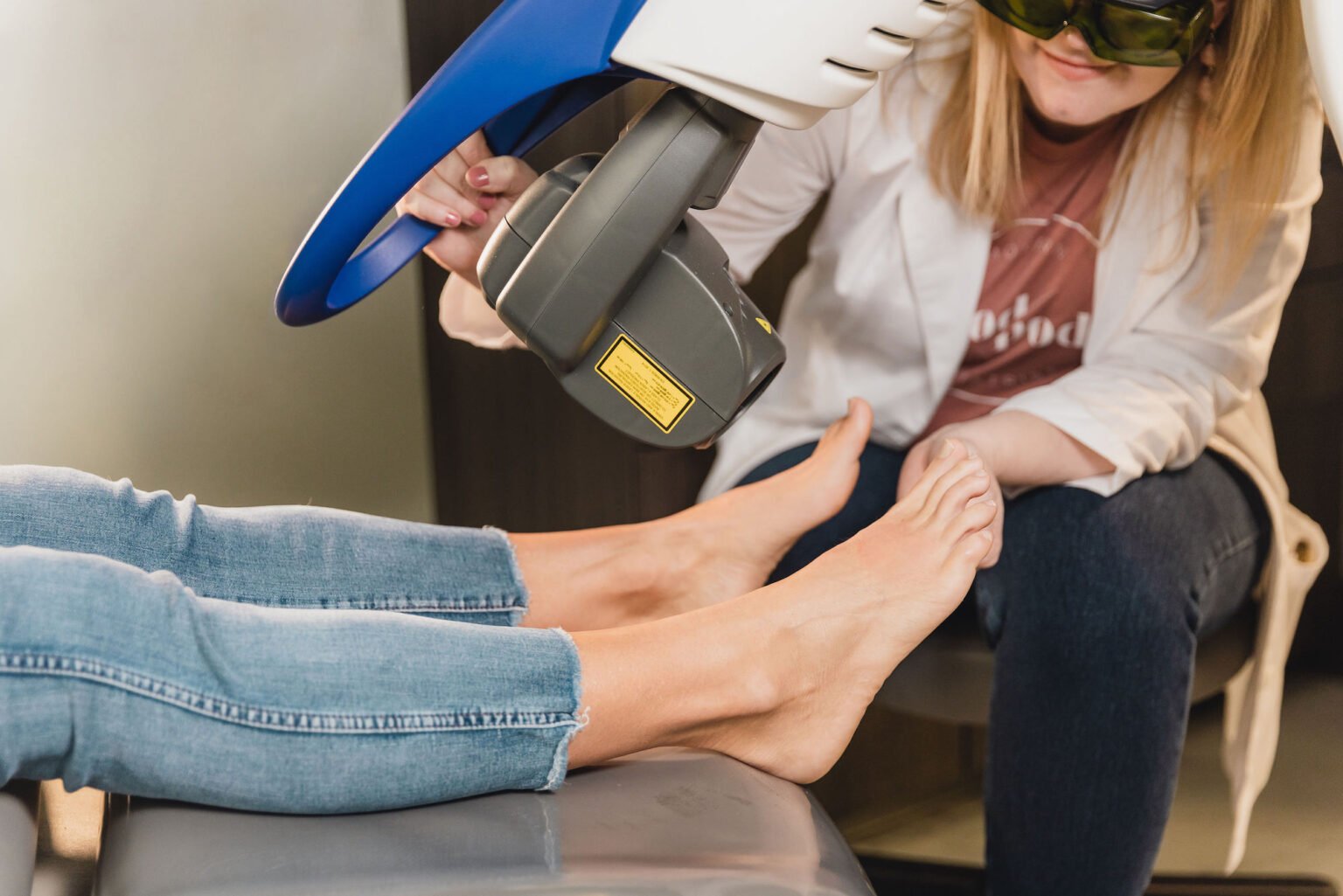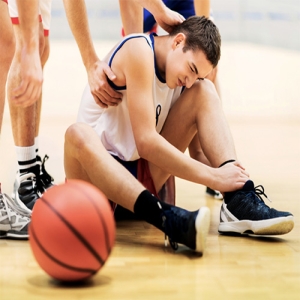March Madness is upon us! For all of you basketball players out there, I know how hard you work and that you are at risk for serious injury when playing. Some injuries can put you on the bench for the entire season! No one wants to be out of the game, so I created this “playbook” of injuries, treatment, and prevention tips to guide you through the season.
Injuries
Ankle Sprain
One of the most common injuries I see in basketball players is ankle sprains. An ankle sprain occurs when the ankle is twisted unnaturally, causing injury to the ligaments. The running across the court and the rapid movements certainly play a factor in causing an ankle sprain. Surprisingly, one of the biggest contributing factors is the biomechanics of the foot.
Firstly, many basketball players have flat feet. While this may seem like an insignificant fact, it is very important to understand why this type of injury occurs. People with flat feet overpronate or their foot rolls inward, causing instability to the ankle joint. This increases the risk of rolling or spraining your ankle just because of how your foot naturally functions.
Achilles Tendonitis
Achilles tendonitis is an inflammation of the Achilles tendon, which runs along the back of your ankle. Repetitive stress on the tendon, playing sports, and improper shoe gear are all contributing factors to Achilles tendonitis. Once again, biomechanics play a huge role.
Flat feet not only cause instability to the ankle but also tightens the Achilles tendon. A tight Achilles can lead to disaster. Not only could you develop tendonitis, but you could potentially rupture your Achilles tendon. Do you remember what happened to Kevin Durant a couple of years ago? He ruptured his tendon and was out of the game for months. Rupturing your tendon is no joke and sometimes can require surgery.
Knee Pain
It should come as no surprise that flat feet can causeknee painas well as other knee injuries like tendonitis or bursitis. The pronation caused by flat feet causes your knees to rotate inwards, placing abnormal pressure on your knees. Talk about painful – especially if you tear a ligament in your knee!
Treatment
These injuries take time to heal and often require immobilization depending on the severity. This can be a basketball player’s nightmare. No one wants to be benched. So, what can we do to speed the healing process along?
Laser Therapy
Laser therapy is a great option to get an athlete back in the game in no time. The FDA-Cleared Class IV MLS Laser uses concentrated light energy to stimulate the body’s own healing process to minimize pain, inflammation and promote healing. The MLS laser is a cold laser, which uses specific wavelengths and a patented delivery system to speed up the process of relieving inflammation, pain and repairing damaged tissue. 80-90% of patients that use laser therapy feel a 40% reduction in pain after just six treatments performed in two weeks.
PRP injection
Platelet rich plasma therapy works to reduce inflammation and pain by injecting your body’s own platelets into a targeted area to help heal the area with your body’s own cells. PRP can speed up the healing of soft tissues and can have more of a long-term healing effect compared to steroid injections, which do not contribute to tissue healing outside of the anti-inflammatory effect. This is a great option for patients who have tendonitis or plantar fasciitis.

Prevention
So how do we prevent any of these injuries from occurring?
The long-term solution for this problem is to wear custom orthotics. Orthotics are corrective inserts that will put your foot in the proper position and ensure your foot functions the way it should. So, if you are a basketball player with flat feet, an orthotic will take your foot from a pronated position to a neutral position. This will make your ankles more stable, take pressure off your Achilles tendon, and reverse the inward rotation of your knees. I recommend that basketball players and all other athletes wear orthotics because it significantly decreases the likelihood of injury.
Ankle braces are also a great way to prevent sports injuries. Braces help stabilize the ankle to reduce the chances of twisting or spraining your ankle. Some people are worried that braces may be bulky, but the braces we offer athletes are really sleek and easily fit into shoes. A custom brace that is made from a mold of your ankle will provide the most correction, but there are also prefabricated braces that provide a lot of support and do well for many athletes. Which option is the best for your needs will be discussed with your doctor.
If you do become injured while playing basketball this season, don’t wait to be treated! Call the office right away at span.tel1.textMainBold or schedule an appointment online. The sooner we start treatment, the sooner you get back on the court.
Good luck this season and GO CATS!!

